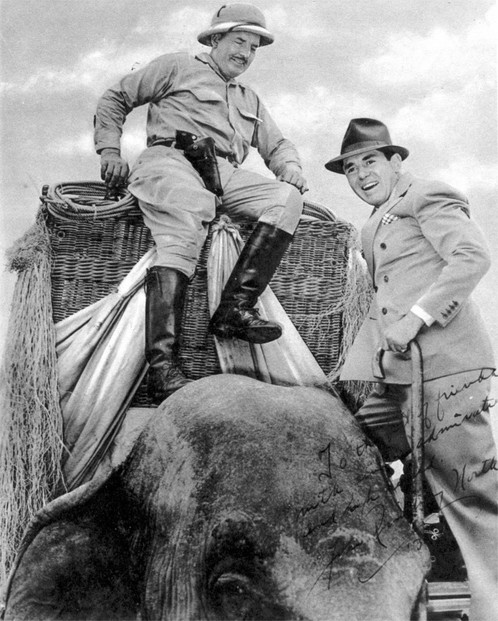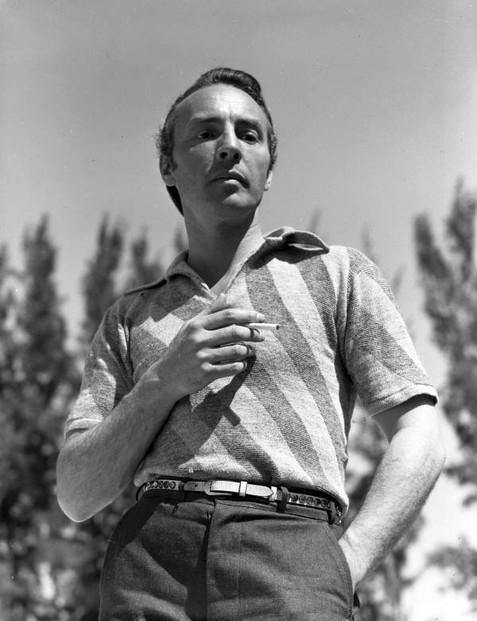Easley, Ryan. 28 May 2012. "Los Angeles Zoo 1977." ShowMe Elephants. Retrieved November 8, 2014.
- Available at: http://www.showmeelephants.com/2012/05/los-angeles-zoo-1977.html
Flanner, Janet; Maloney, Russell; Cooke, Charles. 2 May 1942. "There Goes Igor." The New Yorker: Magazine > The Talk of the Town. Retrieved November 8, 2014.
- Available at: http://www.newyorker.com/magazine/1942/05/02/there-goes-igor
Folkart, Burt A. 7 June 1985. "'Greatest Show on Earth': John Ringling North, Circus Developer, Dies." Los Angeles Times. Retrieved November 8, 2014.
- Available at: http://articles.latimes.com/1985-06-07/news/mn-16021_1_john-ringling-north
"George Balanchine." The George Balanchine Trust. Retrieved November 8, 2014.
- Available at: http://balanchine.com/george-balanchine/
"George Balanchine." New York City Ballet: Explore > Our History. Retrieved November 8, 2014.
- Available at: http://www.nycballet.com/explore/our-history/george-balanchine/
"George Balanchine: Biography." The George Balanchine Foundation. Retrieved November 8, 2014.
- Available at: http://balanchine.org/balanchine/01/bio.html
"George Balanchine: Master of the Dance." PBS.org: American Masters > Episodes > George Balanchine > 14 January 2004. Public Broadcasting Service and THIRTEEN Productions LLC. Retrieved November 8, 2014.
- Available at: http://www.pbs.org/wnet/americanmasters/episodes/george-balanchine/master-of-the-dance/529/
"Georgy Melitonovich Balanchivadze." Biography.com: People. A&E Television Networks, LLC., 2014. Retrieved November 8, 2014.
- Available at: http://www.biography.com/people/george-balanchine-9196284#synopsis
Hammarstrom, David. 1994. Big Top Boss: John Ringling North and the Circus. Champaign, IL: University of Illinois Press.
Helfer, Ralph. 1998. Modoc: The True Story of the Greatest Elephant That Ever Lived. New York, NY: HarperCollins.
Henderson, J.Y. 1951. Circus Doctor. Told to Richard Taplinger. Little, Brown and Company.
"John Ringling North." Ancestry.com. Retrieved November 8, 2014.
- Available at: http://records.ancestry.com/john_ringling_north_records.ashx?pid=96942080
"Igor Fyodorovich Stravinsky." Biography.com: People. A&E Television Networks, LLC, 2014. Retrieved November 8, 2014.
- Available at: http://www.biography.com/people/igor-fyodorovich-stravinsky-9497118#synopsis
"Igor Stravinsky (1882 - 1971)." Classical Net: Composers. Retrieved November 8, 2014.
- Available at: http://www.classical.net/music/comp.lst/stravinsky.php
Joseph, Charles M. 2008. Stravinsky and Balanchine: A Journey of Invention. New Haven, CT: Yale University Press NOOK Book.
Kipling, Rudyard. 1894. The Jungle Book. Illustrated by John Lockwood Kipling. London, England: Macmillan Publishers.
- Available via University of Adelaide eBooks at: https://ebooks.adelaide.edu.au/k/kipling/rudyard/jungle/index.html
Kipling, Rudyard. 1895. The Two Jungle Books. With illustrations by J. Lockwood Kipling, C.I.E., and W.H. Drake. Garden City NY: Doubleday, Doran & Company, Inc.
- Available via Internet Archive at: https://archive.org/details/twojunglebooks00kipl
Kisselgoff, Anna. 12 April 2003. "Vera Zorina, 86, Is Dead; Ballerina for Balanchine." The New York Times: Arts > Archives. Retrieved November 8, 2014.
- Available at: http://www.nytimes.com/2003/04/12/arts/vera-zorina-86-is-dead-ballerina-for-balanchine.html
Martin, C. Lee. 15 October 2009. "The Christianni's and the Circus Fire." C. Lee Martin, et al. Retrieved November 8, 2014.
- Available at: http://cleeandcompany.blogspot.ca/2009/10/christiannis-and-circus-fire.html
Sarah. 14 October 2010. "Circus Doctor (1951) -- Nonfiction." The Pony Book Chronicles. Retrieved November 8, 2014.
- Available at: http://ponybookchronicles.blogspot.com/2010_10_01_archive.html
Saxon, Wolfgang. 6 June 1985. "John Ringling North, of Circus, Dies." The New York Times: International Arts. Retrieved November 8, 2014.
- Available at: http://www.nytimes.com/1985/06/06/arts/john-ringling-north-of-circus-dies.html
Schubert, Leda. Ballet of the Elephants. Illustrated by Robert Andrew Parker. New Milford, CT: Deborah Brodie Book, Roaring Brook Press.
Scigliano, Eric. 2000. Love, War, and Circuses: The Age-Old Relationship Between Elephants and Humans. Boston, MA: Houghton Mifflin Company.
"Vera Zorina." Glamour Girls of the Silver Screen. Retrieved November 8, 2014.
- Available at: http://www.glamourgirlsofthesilverscreen.com/show/292/Vera+Zorina/index.html
"The Story of Modoc Most Famous Elephant in America." Modoc's Market > Modoc's Legacy. Modoc's Market. Web. www.modocsmarket.com
- Available at: http://www.modocsmarket.com/modoc%27s_legacy.htm
"View of Elephant Trainer Walter McClain and His Elephants at the Ringling Circus in Sarasota, Florida." Florida Memory: Photographs. Tallahassee, FL: Florida Department of State, State Library and Archives of Florida. Retrieved November 8, 2014.
- Available at: http://floridamemory.com/items/show/245738
Zorina, Vera. 1986. Zorina. New York, NY: Farrar Straus & Giroux.



















 Are Hawaiian Huakai Po Nightmarchers Avenging Halloween Thursday?on 10/02/2024
Are Hawaiian Huakai Po Nightmarchers Avenging Halloween Thursday?on 10/02/2024
 Mailing Addresses for 2023 Form 4868 Extending 1040 and 1040SR April 15, 2024, Due Dateon 04/15/2024
Mailing Addresses for 2023 Form 4868 Extending 1040 and 1040SR April 15, 2024, Due Dateon 04/15/2024
 Mailing Addresses for 2023 Forms 1040 and 1040SR Filed in 2024on 04/15/2024
Mailing Addresses for 2023 Forms 1040 and 1040SR Filed in 2024on 04/15/2024
 Mailing Addresses for 2022 Form 4868 Extending 1040 and 1040SR April 18, 2023, Due Dateon 04/13/2023
Mailing Addresses for 2022 Form 4868 Extending 1040 and 1040SR April 18, 2023, Due Dateon 04/13/2023



Comments
burntchestnut, Me, too, I agree that the intelligence of animals is ever before us.
We are constantly being shown how intelligent animals are.